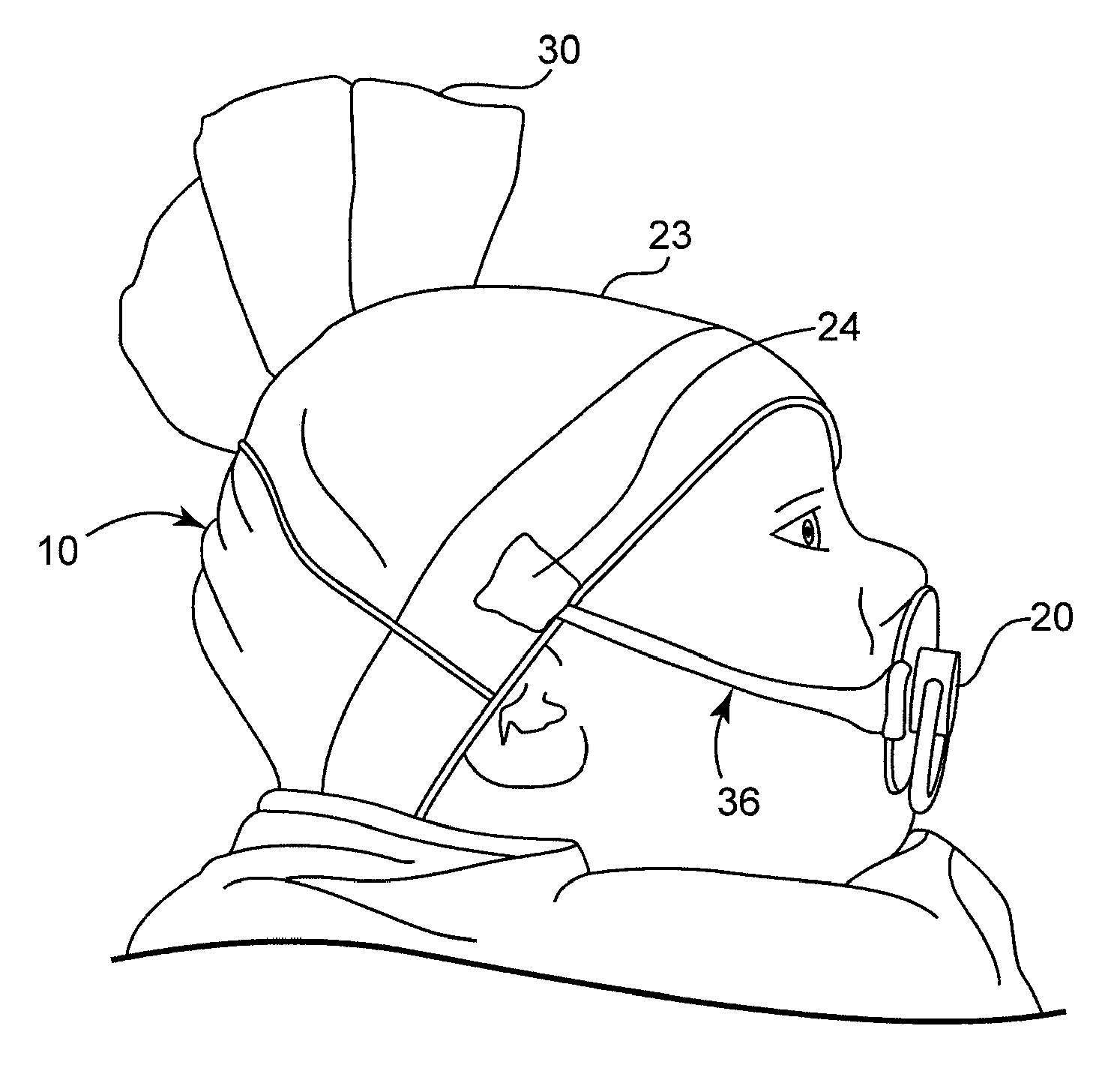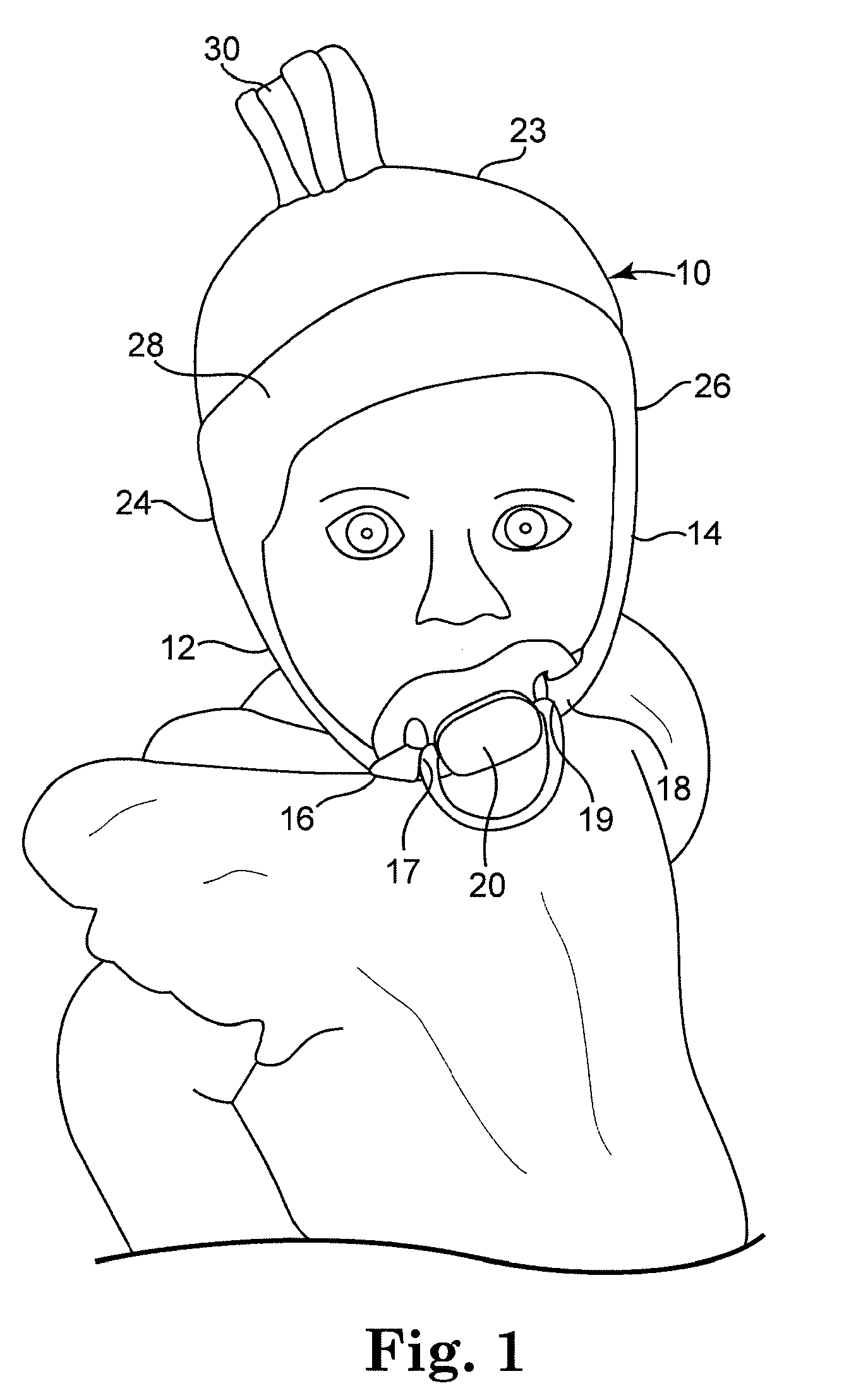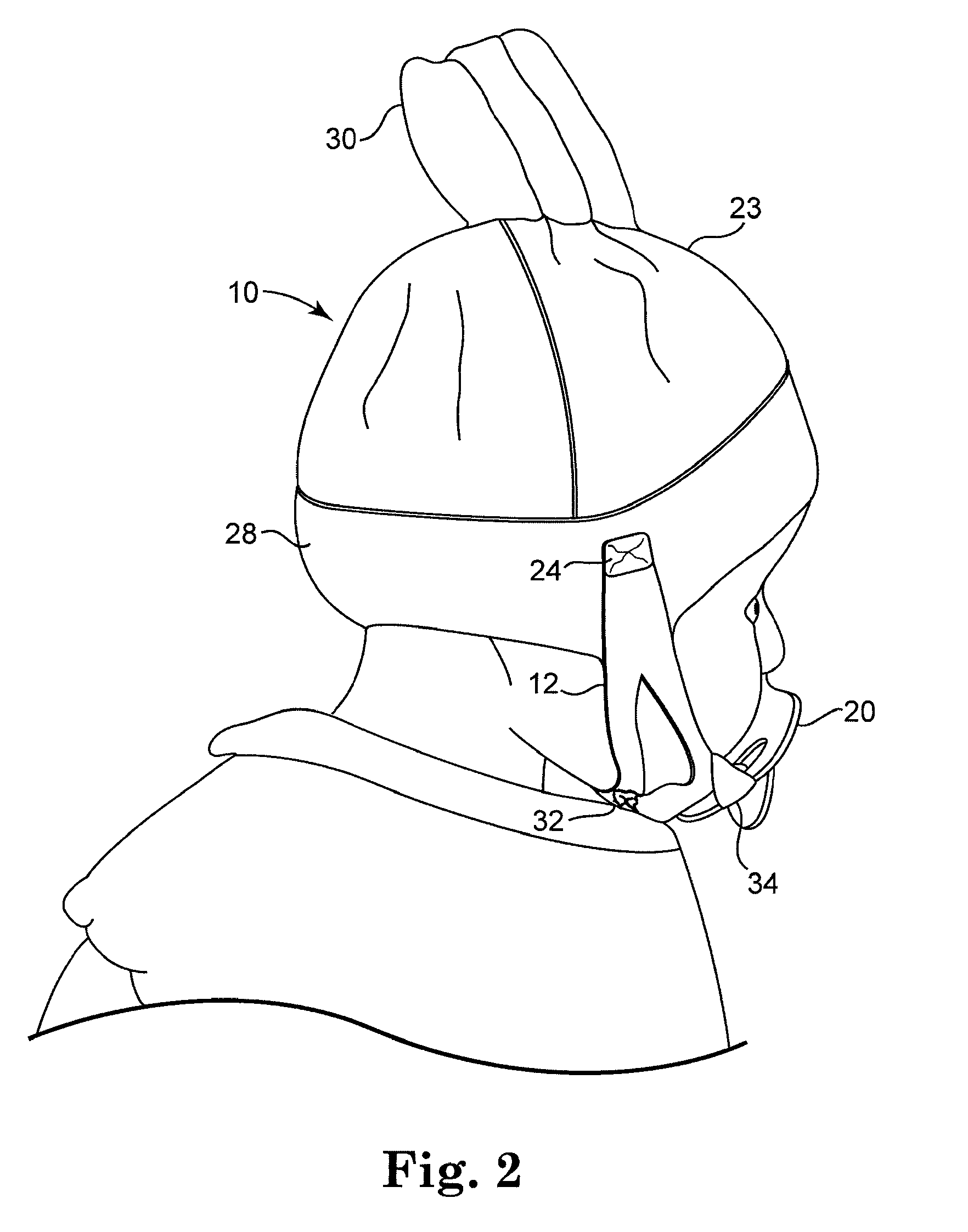Pacifier securing device
a securing device and pacifier technology, applied in the field of pacifier securing devices, can solve the problems of infants generally becoming upset and crying, motor skills, infants being unable to find the pacifier and reinsert it in their mouths, etc., and achieve the effect of ease of us
- Summary
- Abstract
- Description
- Claims
- Application Information
AI Technical Summary
Benefits of technology
Problems solved by technology
Method used
Image
Examples
Embodiment Construction
[0021]Referring to FIGS. 1 and 3, there is shown a pacifier securing device 10 of the present invention. For purposes of this disclosure, the term “infant” is defined as any individual who routinely uses a pacifier, including new born infants, children and the like. There is shown a first strap or support 12 and a second strap or support 14. A first end 16 of the first support 12 is attached to a first side 17 of a pacifier 20. A first end 18 of the second support 14 is attached to a second side 19 of the pacifier 20. A second end 21 of the first support 12 is attached to a first attachment point 24 on a hat 23. A second end 22 of the second support 14 is attached to a second attachment point 26 on the hat 23. It should be noted that the references above to attachment is meant to cover both permanently attached and removably attached. For example, solid sewn on attachments are one possibility, while snaps, hook-and-loop material, buttons and other removable attachment methods may be...
PUM
 Login to View More
Login to View More Abstract
Description
Claims
Application Information
 Login to View More
Login to View More - R&D
- Intellectual Property
- Life Sciences
- Materials
- Tech Scout
- Unparalleled Data Quality
- Higher Quality Content
- 60% Fewer Hallucinations
Browse by: Latest US Patents, China's latest patents, Technical Efficacy Thesaurus, Application Domain, Technology Topic, Popular Technical Reports.
© 2025 PatSnap. All rights reserved.Legal|Privacy policy|Modern Slavery Act Transparency Statement|Sitemap|About US| Contact US: help@patsnap.com



